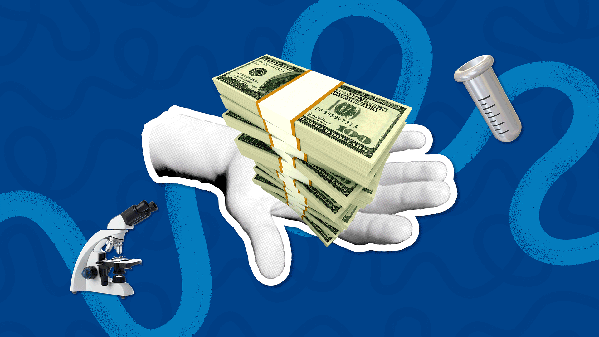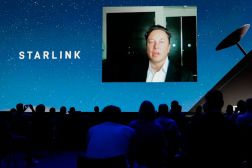Tell us about DIA’s approach to innovation.
Innovation is a high priority at the Defense Intelligence Agency. At an Innovation Advisory Board meeting last December, DIA Deputy Director David Shedd charged the IAB to develop an innovation strategy as a first order of business. Mr. Shedd also announced that a new chief innovation officer would lead DIA corporate innovation with the support of five rotational positions from each of the leadership elements.
DIA’s relevancy to its customers rests in large measure on the agency’s embracing of innovation to improve efficiency, effectiveness and security in an era of rapidly declining resources with no decrement in customers’ demand for DIA products and services. DIA established the Innovation Office to promote an innovation-friendly environment enabling the best ideas, big or small, to emerge from anywhere, spread rapidly through awareness and supportive policy, and accelerate in growth proportional to impact.
The DIA innovation strategy embodies a set of foundational initiatives that are keys to innovation concerning technology and business practices in any mission-centric organization. Each initiative begets a set of tasks that target specific barriers to innovation. The tasks are not intended to be exhaustive, but inform actionable steps to be taken to transform DIA into an innovation leader.
What big projects are you currently working on?
DIA’s new innovation strategy is being internally vetted for implementation across the agency. The strategy embodies a set of foundational initiatives that are keys to innovation concerning technology and business practices in any mission-centric organization.
Each initiative begets a set of tasks that target specific barriers to innovation at DIA. The tasks are not intended to be exhaustive, but inform actionable steps to be taken to transform DIA into an innovation leader. DIA is implementing a tool called “Spark.” Spark is an open innovation site that takes tough intelligence and business process problems and frames them as “Challenges” for the workforce to solve. Co-workers can view and collaborate on proposed solutions. Solvers who meet the Challenge criteria and provide the best solution to the Challenge may receive awards.
Spark provides the opportunity to communicate and innovate more effectively on the most pressing Challenges that matter. Employees have access to a broader audience to obtain creative, cross-cutting solutions from fellow employees with whom one would not typically interact.
What will be your priorities moving forward?
We want to build agility and creativity into the core of all Defense Intelligence Agency activities. We want to drive the DIA workforce to unleash creativity, productivity and agility using tools, processes and methodologies to meet current and future defense intelligence requirements. Ideally, this is done in partnership with the defense intelligence enterprise, other Department of Defense and non-DoD federal/state/local agencies, the private sector and academia.
INO will achieve this mission and vision observing three key principles:
The most important engine for innovation at DIA is the mission “edge.”
Unleashing innovation at DIA starts with empowering mission elements. The lynchpin to innovation at DIA is the “One Team” concept (analysts, collectors, enablers and end users). Passionate individuals driven to make positive contributions to mission accomplishment continuously evolve the way they do their jobs. They leverage tools and shape the information space. In order to maximize the transformative potential of these ideas, we must expand access to and lessen control over information technology resources needed to try and extend new ideas; aggressively proliferate the best of these ideas; minimize bureaucratic structures that drive organic edge innovators to hide rather than share; and maximize awareness of and access to transformative capabilities and practices available elsewhere in the enterprise and commercial sectors.
As many ideas exist inside the agency, there are more outside. Models for discovering and leveraging outside ideas are required to keep pace with change.
Central to an innovation strategy is deference to Joy’s Law, which states, “No matter who you are, most of the smartest people work for someone else.” (Attributed to Sun Microsystems co-founder Bill Joy.) It follows that a key to innovation is the ability to efficiently leverage ideas from anywhere, especially outside our organization: the greater intelligence community, elsewhere in government, coalition partners, industry and academia. It is not enough to know that good ideas exist; a framework must be established to support the rapid evaluation, acquisition and integration of promising technologies attacking the friction that isolates us from cutting-edge developments.
Innovation relies on creative destruction (for example, the free flow of resources from bad ideas to good ideas).
Creative destruction is the flow of resources from underperforming capabilities to newer, better ideas. Overwrought bureaucratic structures, organizational stovepipes, long budget cycles and inconsistent technology standards obstruct this flow and undermine innovation. History has shown that innovation thrives in a marketplace where the best ideas emerge based on demand instead of central planners’ decisions. Disruptive (paradigm changing) technologies and methods are, by definition, at odds with established procedures and practices, and are often discounted by planners versed in established models. Current acquisition and implementation practices rely on the judgment of IT professionals and senior decision makers who are poor proxies for the mission elements they seek to satisfy.
Decentralized decision-making, allowing end-users to “vote with their feet,” coupled with fluid resource allocation and an IT infrastructure that supports adaptation is crucial to leverage disruptive, paradigm-changing emergence. The value of disruptive capabilities can only be realized through use: confounding existing requirements driven acquisition practices.
Further challenging the current model, attempts to drive adoption of disruptive capabilities from the center of an organization can do more harm than good. Historically, disruptive capabilities only gain traction when grown organically from the edge in permissive environments that allow users to move, with minimum friction. Finding a balance between agility and stability in the existing federal government budgeting process is essential.
What trends are you seeing in the federal IT space?
A rapidly changing technology horizon, dynamic international landscape and growing budget austerity create an imperative for innovation. Innovation is the driver for productivity gains, the ability to do more with less. DIA is committed to building agility and creativity into the core of all its activities. The INO is actively engaged in creating an environment that unleashes the creativity of the workforce and empowers problem solvers to turn ideas into mission capabilities quickly. Establishing an infrastructure of “systematic opportunism” supports the mobility and growth of ideas and will unlock unforeseen possibilities, enabling us to tackle current and future challenges efficiently and effectively.






